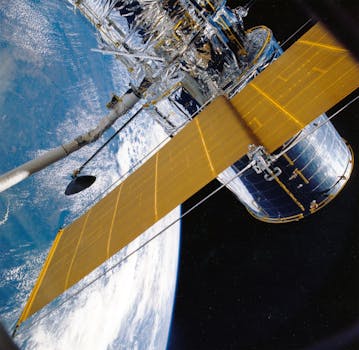
The Rise of Mega-Constellations: Latest Updates in Satellite Telecommunications
The Rise of Mega-Constellations: Latest Updates in Satellite Telecommunications. The field of satellite telecommunications is undergoing a significant transformation with the rise of mega-constellations. These constellations, comprising thousands of small satellites, are being launched into orbit to provide global internet coverage, revolutionizing the way we communicate and access information.
One of the key players in this field is SpaceX, which has already launched over 1,000 satellites as part of its Starlink constellation. The company aims to provide fast and reliable internet connectivity to remote and underserved communities around the world. Other companies, such as Amazon’s Kuiper Systems and OneWeb, are also launching their own constellations, with the goal of providing global internet coverage.
Benefits of Mega-Constellations
The rise of mega-constellations has several benefits, including providing internet access to remote and underserved communities, improving global communication, and enabling the Internet of Things (IoT). These constellations can also provide backup connectivity during natural disasters or network outages, ensuring that critical communications remain available.
Furthermore, mega-constellations can also enable the development of new technologies, such as autonomous vehicles and smart cities. With the ability to provide real-time data and connectivity, these constellations can help to create more efficient and sustainable infrastructure.
Challenges and Concerns
Despite the benefits of mega-constellations, there are also several challenges and concerns. One of the main concerns is the risk of space debris, as the large number of satellites in orbit can increase the risk of collisions and create a hazardous environment for other spacecraft.
Another concern is the impact of mega-constellations on astronomy, as the satellites can interfere with astronomical observations and create light pollution. There are also concerns about the regulatory framework for mega-constellations, as the current regulations may not be sufficient to ensure the safe and responsible deployment of these constellations.
Future of Mega-Constellations
Despite the challenges and concerns, the future of mega-constellations looks promising. As the technology continues to evolve, we can expect to see more efficient and sustainable constellations, with improved performance and reduced costs.
The rise of mega-constellations is also driving innovation in the field of satellite telecommunications, with new technologies and applications being developed to take advantage of the global internet coverage provided by these constellations.
In conclusion, the rise of mega-constellations is revolutionizing the field of satellite telecommunications, with thousands of small satellites being launched into orbit to provide global internet coverage. While there are challenges and concerns, the benefits of mega-constellations make them an exciting and promising development in the field of space technology.





